- Introduction
Cultural landscape is defined as a synthesis of natural and anthropogenic factors within a landscape, emerged over time. This includes a well-balanced, symbiotic relation: vegetated landscape has been shaped and cultivated by humans building their settlements, and, at the same time, natural, influential resources of a landscape (topography, vegetation, sources of water) directed the transformation of the artificial environment, providing essential conditions for life. The balance and harmony achieved through this synthesis of man and nature can be preserved only through sustainable development: “In the past, societies were either sustainable or they died out. Because their buildings were so harmoniously enmeshed with their surroundings, culturally authentic and imprinted with values at once spiritual and ecological, they couldn’t but have beauty that speaks to us today” (Day, 2002). Ecological aspect of sustainable development has always been of a crucial importance, since nature has provided life for humans and therefore its protection and preservation has been a necessity, a survival condition sine qua non, especially during the pre-industrial times. Nowadays, unfortunately, we have to be reminded of how important the environment is; hence, how beneficial its preservation and protection is for our life. The Case Study of Kostanjica, a small, former fishermen village in Boka Bay, Montenegro, provides an insight into negative and highly unsustainable tendencies of Investors’ urban planning and profit-driven architecture, devastating for the cultural landscape, a unique and valuable spatial, natural and Culturo-Historical resource. The analysis of this harmful phenomena includes exploration of some influential social, political and cultural factors that have leaded to its occurrence. Furthermore, theoretical and empirical aspects have been involved. Finally, some exemplary architectural principles and models will be addressed in order to approach to a solution to this socio-cultural problem that threatens Boka Bay to be erased from UNESCO’s World Heritage list. This deteriorating spatial phenomena not only deprives the community of a valuable natural and cultural resource, but also jeopardizes the ecosystem and natural cycles, and thus the life in this area, which is the reason why it has to be halted and the consequences minimized. In addition, the sustainable development principles have to be addressed and applied since it is the only way for us to maintain healthy life for ourselves and the future generations.
2. Sustainable development in Montenegro
Montenegro is a small Mediterranean country well known for its natural beauties. Situated among Balkan Mountains, in the southern part of the Adriatic Sea, it is a contrasting mosaic of steep mountains, clear blue sea, sandy and rocky beaches, dramatic river canyons, varied lakes, rich and abundant wildlife.
Attractive and diversified landscape is one of the most important natural resources of Montenegro. According to Spatial plan (2012), ten landscape types have been distinguished, among which the four of Mediterranean character. These landscape categories have been divided into 21 landscape units, among which is the unique Boka Bay.
Landscape is an image of a scenery that cannot be observed merely on the base of individual elements, but as a spatial- ecological, economic and cultural entirety (Pasinovic, 2008). Cultural landscape, a combination of autochthone, natural elements and various local traditions, has emerged as a result of complex cultural, historical, social and economic conditions and circumstances reflected on the natural background. Perceived as both, natural and cultural heritage, it contains a significant potential and value in terms of the ecological and cultural sustainability. Therefore, its protection and revitalization is a precondition of the sustainable development.
Owing to its complex history which included various nations and civilizations supremacy over this area (Ancient Greeks, Romans, Illyrians, Venetian Republic, Russia, France, Austro Hungarian Monarchy), and the authentic, natural landscape beauties, Montenegro includes numerous valuable and unique cultural landscapes. Boka Bay is the only bay on Montenegrin coast, exceptional in the quality and value of both dramatic natural environment and architectural and cultural heritage, described in the notes of the Russian officer Vladimir Bogdanovic Bronevski in 1836: “I haven’t seen more terrifying and yet more beautiful place. Giant, rocky hills in reddish color, piled up irregularly one upon another. Lovcen is the highest mountain showing its peak above clouds. The longitudinal bay looks like a lake lying on the bottom of a dark, deep basin whose shores are interspersed with settlements and fortresses. Wonderful buildings, numerous ships and vegetation of fertile gardens in the narrow valleys decorate this truthfully romantic place creating a splendid contrast to the gloomy appearance of the barren hills in the surrounding” (Grgurevic, 1997).
1. Sustainable development policy and agendas
The first recognition of sustainable development principles in Montenegro was in the regional Spatial plan of Southern Adriatic, introduced in 1969, sponsored by United Nations and the SFRY[1] Government. Sustainability was the main criteria in the so called “development points” defined by Montenegrin, French and Italian urbanists and planners, 23 years before the Rio Declaration on Environment and Development in 1992. It was the first Spatial plan of the Republic of Montenegro in 1986 that mentioned the “environmental protection”.
The awareness of valuable, abundant, natural resources and beautiful nature has led to the Declaration of Ecological State, proclaimed in 1991, while Montenegro was still a Republic of SFRY. This Declaration implying that nature is the source of health and inspiration of our freedom and culture, and thus its protection is the highest priority, has been later implemented in the Constitution of Montenegro. In 2001, a strategic document called Ecological State of Montenegro Development Directions was legislated, upon which a National Council for Sustainable Development has been appointed.
Soon after Montenegro gained its independence in 2006, the spatial development policy has been reformed, following the legislation and models of the European Union. The first National Strategy for Sustainable Development was issued in 2007, followed by Environmental Law (2008), Nature Protection Law (2008, amended in 2013) and Cultural Heritage Preservation Law (2010) which has introduced the term cultural landscape.
The European Landscape Convention of the Council of Europe, also known as Florence Convention, brought in 2000, the first international treaty devoted to protection, management and planning of European Landscapes, has been approved in Montenegro in 2008. According to this Convention, landscape has been recognized as an integral part of the Environment, the manifestation of Cultural and Natural Heritage diversity and the foundation of the Regional Identity.
Finally, the National Strategy for Sustainable Development until 2030, brought in 2016, involved comprehensive analysis of the sustainable development in Montenegro, through various social, cultural and ecological aspects.
2.1 Environmental protection in practice
Despite the fact that Montenegrin sustainable development policy and legislation have followed successful models and practices of the European Union, the space, and thus the cultural landscape, has not been protected and preserved. The cultural landscape devastation has occurred as a result of excessive and uncontrolled urbanization, inadequate distribution of touristic capacities, illegal building[2] and inappropriate projects of infrastructure. The most significant difference between the legislation and realizations appears in the coastal zone, since this area is the most attractive for both, local and foreign developers. “Investors’ urban planning”, that is the urban planning directed by fulfilling investors’ needs and wishes where private interest takes supremacy over the public one, has been a negative practice in Montenegro for more than a decade. Even though this trend has been occurring throughout the entire coast, the Boka Bay has been the most affected by it, due to the closed morphology of the Bay where interventions in space are the most easily noticeable, while the elevated risk of being erased from UNESCO World Heritage list makes the problem more serious and relevant.
In the National Strategy for Sustainable Development until 2030, numerous weaknesses and problems in the sustainable development system have been recognized, such as poor interinstitutional cooperation, as well as insufficient and underqualified human resources. Furthermore, there is no unified environmental informational system, nor the functional cadastre of the polluters. In addition, public and private interest have not been synchronized and methods of environmental protection are more of a reactional than a preventive character. Overall, neither administrative nor the operational (technical) capacities for the application of environmental protection regulations have been developed. In terms of the cultural landscape, spatial devastation occurs mainly due to the lack of integrative approach towards environmental and cultural heritage protection. Regional Institute for Protection of Cultural Monuments, founded in Kotor after the catastrophic earthquake in 1979 has been the only institution responsible for the Architectural Heritage protection in the Bay. However, its authority has been limited to the protection of the valuable buildings, without the reference to the environment[3]. The harmony of the urbanized space and autochthone green areas represented in the cultural landscape of Boka Bay is a precious synthesis of natural and cultural heritage and therefore its preservation is of crucial importance for sustainable development and the development of tourism in the area (Lalosevic, 2010). In addition, new building transforms not only the appearance of the landscape (aesthetic aspect), but also the natural environmental elements such as topography, vegetation, climate, and ecosystem. This is the reason why maintaining ecological balance is essential for sustainability in Boka Bay, as well as the integrative approach to the heritage protection that would address equally natural and architectural (artificial) aspects of the cultural landscape.
3. Cultural landscape of Kostanjica
Boka Bay is naturally and culturally unique bay in the northernmost part of the Montenegrin coast. Its Natural and Culturo-Historical beauty has been recognized by UNESCO: “The Outstanding Universal Value of the Culturo-Historical Region of Kotor is embodied in the quality of the architecture in its fortified and open cities, settlements, palaces and monastic ensembles, and their harmonious integration to the cultivated terraced landscape on the slopes of high rocky hills. The Natural and Culturo-Historical Region of Kotor bears unique testimony to the exceptionally important role that it played over centuries in the spreading of Mediterranean cultures into the Balkans”(URL 1). Kostanjica is a small, former fishermen village located in the north-west area of the Bay of Kotor (Figure 1), founded in Ancient times and expanded during the Venetian Republic supremacy over Boka. It is distinguished by vernacular architecture harmonized with the sloping landscape by terraced gardens, local natural building materials (stone and wood) and autochthone vegetation. In addition, narrow coastline including piers and docks made of stone, accompanied by traditional stone houses, represents achieved balance and harmony of the natural and anthropogenic elements (Figure 2). This Cultural Landscape represents peculiarities of the place by reflecting socio-cultural patterns emerged from the needs and the way of life of the people who have inhabited this area over the centuries (fishermen, sailors, agriculturalists). It is a valuable Heritage expressing identity of Boka Bay, but only if perceived as an inseparable unity of natural and artificial, of vegetated landscape and architecture rooted in it.
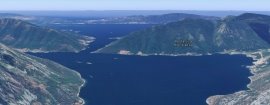
Figure 1. Location of Kostanjica- northwestern part of the Bay of Kotor (Source: URL 2)
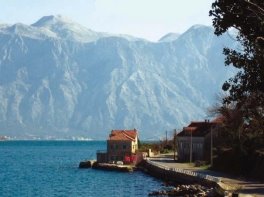
Figure 2. Coastline of Kostanjica- harmony of natural and anthropogenic elements (Source: SAHP)
3.1 Study of Architectural Heritage Protection in Kostanjica (SAHP)
The Cultural Landscape of Kostanjica has been profoundly analyzed in the Study of Architectural Heritage Protection, done by Boka-based experts for Architectural Conservation and a landscape architect, completed in 2008, prior to the Amended Detailed Urban Plan of Kostanjica, brought in 2009. Several main elements of the cultural landscape have been distinguished in the Study:
- Terraced gardens with arable land and fruit gardens, a representation of the cultivated landscape- hill slopes adjusted to agricultural use (Figure 3).
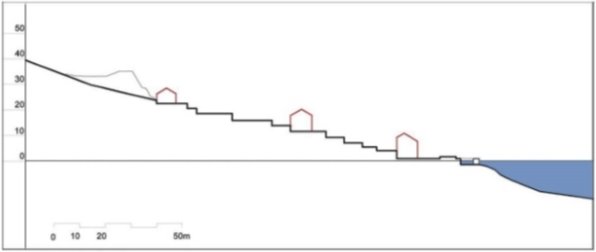
Figure 3. Terraced landscape of Kostanjica (Source: SAHP)
- Chestnut tree and laurel forest, an abundant natural resource of Kostanjica[4]. Chestnut was used for food, and its wood as a building material, while laurel was mainly used as a food spice in some local dishes.
- Pedestrian pathways, paved in stone, connecting the distant settlements in the hillside with the coastline, in two directions: following the topography contour lines and perpendicularly to this direction as staircases (Figure 4).
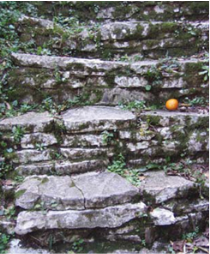
Figure 4. Pathways- stairs in stone
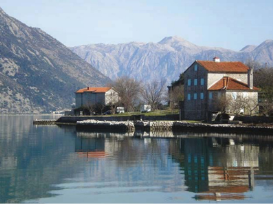
Figure 5. Coastline of Kostanjica: piers, docks and old stone houses.
- Coastline with piers and docks, made of stone blocks, remains of once dominant fishermen and maritime culture in this area (Figure 5).
- Clusters of traditional houses, valuable examples of vernacular architecture in stone.
- Landscaping elements in the courtyards (stone pavement, retaining drywall, staircase on the ground, pergola- “odrina”, stone bench- “pizuo”).
- Autochthone vegetation in the gardens and courtyards (citrus fruits, olive trees, grapevine, flowers).
- Water features (old water tank, well).
Specific heritage and cultural landscape protection guidelines emerged from the Study: (1) Preservation and Revitalization of the chestnut tree and laurel forest[5]; (2) Preservation of the cultural landscape elements (terraced vegetated gardens, traditional landscaping elements); (3) Maintaining the existing spatial concept of the settlements (large open green areas between the clusters of houses). Furthermore, the directions for newbuilding areas were: (1) Maintaining the minimum of roads, introducing new roads only if absolutely necessary and by respecting the topography contour lines and existing retaining walls; (2) moderate and low-density newbuilding; (3)Consideration of the existing spatial capacities (land slopes, landscaping methods and elements) by planning buffer green zones towards the existing traditional architecture.
3.2 Amended Detailed Urban Plan of Kostanjica
In 2009, a year after publishing the Study, the Amended Detailed Urban Plan of Kostanjica was legislated, providing regulations and design guide lines for building in the area.
The Plan underlines that the entire area of Kostanjica is within a Natural and Cultural Heritage zone requiring the most cautious approach to planning and building. Therefore, preservation of the nature, sea, landscape, architectural and cultural heritage is the highest priority. In terms of the natural landscape, autochthone vegetation and land morphology should be preserved. Newbuilding in general and the touristic capacities in particular, should be adjusted to the existing topography, vegetation and to the entire natural and artificial environment. In addition, the conservation conditions and guidelines from the Regional Institute for Protection of Cultural Monuments have to be fully followed. Abundant, autochthone forest in the surrounding of the traditional settlements (chestnut tree and laurel forest) provides optimal air comfort, that is protects the air from pollution; and thus has to be preserved.
Landscaping regulations imply that the terrain around buildings has to follow the natural land configuration, as well as the retaining walls. Also, it is prohibited to cut the authentic vegetation, especially chestnut and laurel trees. In addition, each new-formed urbanistic plot has to include new planted at least three laurel trees and one chestnut tree.
However, when the Map from the Study and the Map from the Plan are overlapped, the new urbanized area partly covers the zone of chestnut tree and laurel forest, meaning that it is not possible to preserve authentic and highly beneficial vegetation and build according to the new Plan.
Furthermore, when it comes to the more specific building regulations, there is a scarcity of graphic and numeric representations in the Plan. The only parameter of the vertical regulation is the maximal number of floors- three floors above ground regardless of the nomenclature. In this regard, no drawing section through the terrain has been provided in the Plan, nor the sketches of terraced buildings and retaining walls adjusted to the existing, natural land slope. If this was done, it would’ve been evident that it is impossible to preserve and respect Natural Topography of the land and yet build according to building lines and vertical regulation. To clarify, when new buildings are located according to the building lines, the ground floor level is already several meters (up to two floors) above the existing terrain-the accessing road. This is the explanation for the excessive height of the retaining walls appearing throughout the newly urbanized area of Kostanjica. Vertical regulations provided in detailed urban plans have to limit the height between the accessing road and the ground floor (usually up to one meter), in order to avoid having too high buildings in disharmony to the surrounding and the topography. In this case, there was not any kind of height limitation, neither for the ground floor level, nor the retaining walls. When the section through the newly urbanized area is compared to the section through the area where the traditional settlements are (given in the Study), significant height difference of 25 meters on the same distance from the sea occurs (Figure 6). This demonstrates the extreme land slope, three times steeper terrain in the new urbanized area than in the area of traditional settlements, which clearly confirms the lack of possibility to build in the newly urbanized area without destroying the natural land topography. Moreover, building on such a steep terrain is not feasible since it requires extensive excavations, especially in the case of rocky soil, such is this one.
Nevertheless, there is an advantage of building on such a steep terrain, which initiated this case of investors’ urban planning. No building can block the view for the neighbor behind. Each apartment features ‘captivating panoramic view’ towards the sea, beautiful town Perast and the two islands in front of it. Also, the apartments are in close proximity to the sea and the rocky beaches. Hence, the selling price of these exclusive apartments will be significantly higher than average.
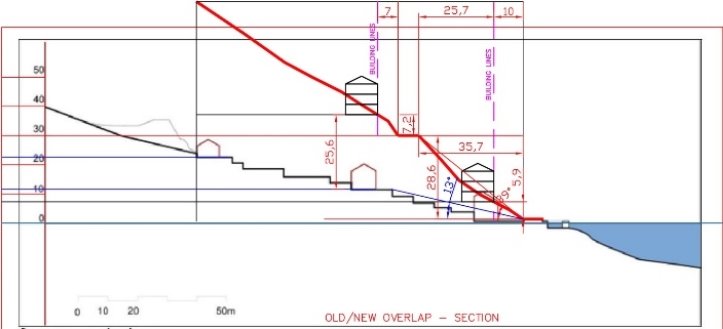
Figure 6. Section through the old/new urbanized area- overlap (Source: Kosara Kujundzic)
Going back to the cultural landscape protection guidelines from the Architectural Heritage Protection Study, evidently none of them has been respected in the Plan. Preservation of the chestnut tree and laurel forest has not been provided since the extended urbanized area partly covers the zone of the forest planned for new building. Also, traditional terraced vegetated gardens have been excluded from the new building and landscaping, replaced by the massive retaining walls needed in order to access ground floor level from the road. Finally, the existing spatial concept of the low density settlements and large green areas between the houses has not been maintained, since the building capacities given in the Plan imply dense building and numerous houses on a relatively small area.
Furthermore, the Plan has neglected the newbuilding directions from the Study by introducing a wide new road disrespectful to the topography contour lines (Figure 7), with only purpose to access urbanistic plots on the higher level, which was not necessary, but certainly improves the comfort for those buildings occupants; and thus confirms the private interest supremacy over the public interest- landscape and environmental preservation.
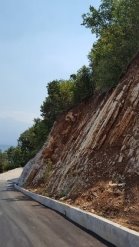
Figure 7. The new road (Source: Kosara Kujundzic)
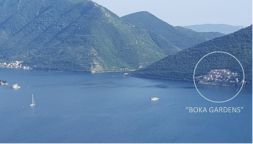
Figure 8. Tourist resort ‘Boka Gardens’-location (Source: Kosara Kujundzic)
4. Case study: Tourist resort ’Boka Gardens’
The ongoing Development of Tourist resort ’Boka Gardens’ has been under construction since 2012. Located in the extended urbanized area of Kostanjica that used to be covered by chestnut tree and laurel forest (Figure 8), it consists of 32 terraced houses with apartments for sale. In order to build this resort, extensive excavations of the rocky ground had to be made, destroying the natural existing topography. The devastation of the natural landscape has been completed by cutting the chestnut tree and laurel forest, precious natural resource embedded in the local tradition.
Nevertheless, the design and building has been following the Amended Detailed Urban Plan of Kostanjica, that is the poor and insufficient directions given in the plan, and yet it causes spatial devastation, which imposes the question which plan came first: the Urban Plan, or the Business and Design Plan for the Development?
Since the height of the retaining walls was not specified in the Plan, nor the height of the ground floor in reference to the accessing road, the new buildings have extensive height apparently exceeding the height of ‘three floors above ground’ (Figure 9). Even though the floors nomenclature is ground floor, first floor and second floor or loft, which matches the vertical regulation given in the Plan, buildings appear oversized, significantly higher and bigger than the traditional archetypal models, in fact, without any reference to those. It seems like the land has been entirely occupied and there is no vegetation left, in opposition to the harmony of the natural environment and architecture achieved in the traditional settlements.
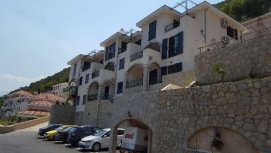
Figure 9. Excessive height of the new building and the retaining walls (Source: Kosara Kujundzic)
Furthermore, the design is described as ‘Mediterranean style Architecture’. However, these houses by all means have no resemblance to the traditional architecture in stone, rooted in local building tradition, harmonized with the surrounding. The buildings do not belong to Boka Bay region, and could be equally placed elsewhere. In terms of the architectural elements, green shutters are the only vague link to the traditional wooden shutters. All the rest is a different architectural vocabulary. Complex roof planes, in opposition to the pitched roof on the local houses, distinctive eaves that cannot be found in traditional architecture, the locally unfamiliar manner of building in stone without any structural logic behind it. The arch is another element rarely and differently implemented in the vernacular architecture of the Bay. Overall, the new building is extremely disrespectful to genius loci and the cultural landscape of Kostanjica, causing a serious devastation of both, natural and architectural Heritage.
The apparent devastation of the cultural landscape has provoked numerous reactions of the professionals and the civil sector. The citizen of Boka have performed a theatre play called ‘Koto(r) o Kotoru’[6], addressing political, social and cultural problems in Boka Bay. The case of Kostanjica has been included, presented in the ironic postcard distributed to the audience (Figure 10), where ‘Boka Gardens’ resort is shown in the background of the beautiful artificial island Lady of the Rock, which is one of the most valuable Culturo-Historical sites in the Bay. The postcard clearly demonstrates the tremendous destruction of the landscape and the island view from Perast.
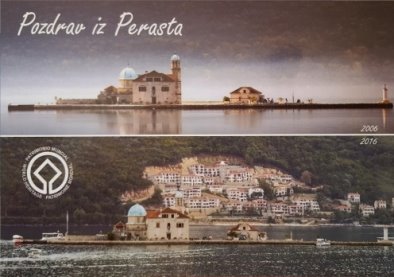
Figure 10. “Greetings from Perast”, an ironic postcard from the theatre play ‘Koto(r) o Kotoru” (Source: Kosara Kujundzic)
5. Seeking solutions
The Investors urban planning reflected in the Amended Detailed Urban Plan in Kostanjica and the ‘Boka Gardens’ Development emerging from it, have resulted in irreversible spatial devastation. However, strategies and operational plans have to be made in order to minimize the consequences.
World Heritage Committee (UNESCO) hold a session in Istanbul in 2016 during which a great concern for Montenegro in general and Boka Bay in particular has been expressed, related to the uncontrolled building and urbanization that have jeopardized the status of Kotor on the World Heritage list. The session resulted in a decision – request delivered to the Montenegrin Government to provide insight and synchronization of all the urban plans in Boka Bay through the comprehensive Heritage Impact Assessment Study (HIA), based on the Guidance on HIAs for Cultural World Heritage Properties, established by ICOMOS. The specific section of the HIA study referred to Kostanjica, especially to the ‘Boka Gardens’ resort area, as the case of a major cultural landscape devastation.
This case has not only shown the flaws in the urban planning process directed by investors’ private interest, but also urban development process deprived of monitoring and governing actions. To clarify, there is no control during the building process related to the landscape issues. As previously mentioned, the Institute for Heritage Protection doesn’t have any authority regarding the natural aspect of the cultural landscape. Also, no control over the landscaping process in practice exists. That is, no institution is in charge of the landscape issue during the building process. The furthest the control reaches is during the obtaining building permit stage, when landscaping project included in the main project has to be done according to the urban plan.
5.1 HIA (Heritage Impact Assessment) Study
Heritage Impact Assessment Study (HIA) is a document aimed at maintaining Kotor on UNESCO’s Word Heritage List, by regulating excessive spatial pressure of the touristic economy and commercial real estates. According to the methodology and nomenclature of UNESCO, the two relevant categories have been distinguished in the Study: exceptional universal value attributes (graded from 1 (lowest) to 5 (highest) value), and danger/risks impact factors affecting the attributes. The most important attributes refer to the cultural landscape, as views (axes), among which are the two related to Kostanjica: (1) the view from Perast toward the islands: Lady of the Rock (artificial island) and Saint George (natural island), and (2) the view from Risan toward Morinj and Kostanjica. Both views include devastated area of Kostanjica whose cultural landscape is mentioned in several categories of the Study, such as: “harmonized integration in the cultivated terraced landscape in the Mountain foothills”, “the relation sea-coastline-mountains” and “the settlements adjusting to the natural environment” (HIA, 46-48). In addition, the transformations in this area have been recognized as close to catastrophic, that is almost the total devastation of one of the most important views (the view from Perast toward the islands) in the Natural and Culturo-Historical Region of Kotor (HIA, 18-19). In order to achieve a high level of Heritage Protection in Kotor area and Kostanjica, the following spatial elements have to be preserved: primordial landscapes with coastal settlements; horizontal structure of the landscape (excluding the possibility of continuous and dense building); vertical structure of the landscape (the silhouette and the integrity of the green slopes); architectural values of the traditional coastal settlements, and visual marks such are the islands close to Perast and their natural background (Kostanjica). The Heritage Protection methods referring particularly to devastated areas in Kostanjica are: inserting vegetation (mostly trees) between the buildings and halting further building in the area (suspension of the Amended Detailed Urban Plan of Kostanjica), until the new Plan done according to the conclusions and directions from HIA is brought (HIA, 238-242).
5.2 Paradigmatic architectural models
In order to protect the Natural and Cultural Heritage, the positive arrogance approach has to be taken. This approach is peculiar to Montenegro, based on the concepts of the ecologically and culturally sustainable development, founded on the regional vernacular values, relied on the transparent political processes and the Heritage-worthy Education; and integrated in the locally regulated world economic trends (Radovic, 2005).
One of the most important sustainable (humane) design principles, aimed at Preservation of Natural Conditions; and thus improving the quality of life for humans and other species is to Respect Topographical Contours. Modification of the existing natural topography has negative effect on the environment: “radical terraforming is not only expensive but devastating to the site’s microclimate. Alteration of contours will affect how water drains and how wind moves through a site” (Jong-Jin and Rigdon,1998). Therefore, buildings should adjust to the natural topography, and respect the existing topographical contours. A good example of this principle is Competition ”Artist residence in Boka” winning project of Japanese architect Tomohiro Hata. The author designed the façade and retaining walls in stone, directed completely according to the topographical contours (Figure 11). Like this, terraced houses are blended into the surrounding, achieving harmony with the natural environment.
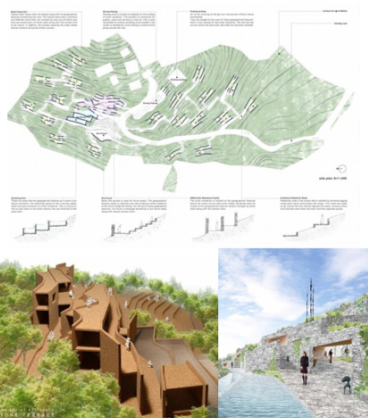
Figure 11. A Competition “Artist Residence in Boka” Winning project of Tomohiro Hata (Source: URL 3)
In the guidelines for urban planning and architectural design referring to the Kotor area (Lalosevic, 2010), respecting the natural topography is one of the principles. The retaining walls height should not exceed 2 meters (Figure 12). As previously mentioned, in the case of Kostanjica, the retaining walls have reached the height of two floors (7 meters).

Figure 12. Design guidelines- retaining walls (Source: Lalosevic, 2010)
A successful example of architectural regionalism is house in Bigova (Kotor Municipality). This house, designed by Professor Vasilije Milunovic, is a contemporary realization reflecting peculiarities of the place. The autochthone vegetation and terraced landscape enabled the house harmonizing with the environment. In addition, the architectural elements typical for this region such as shutters, pergolas, reddish roof tiles and stone as main façade material, have been interpreted in the creative, contemporary manner (Figure 13).
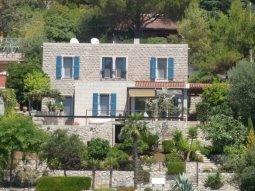
Figure 13. House in Bigova- context-related design (Source: Kosara Kujundzic)
6. Conclusions
The case study of “Boka Gardens” have revealed many weaknesses of the Sustainable Urban Development practice in Montenegro. This touristic resort has evolved as a consequence of Investors’ urban planning and profit-driven architecture.
Despite the fact that a comprehensive Architectural Heritage Protection Study has been made prior to it, the Amended Detailed Urban Plan of Kostanjica haven’t followed the guidelines and principles from it, providing a base for the spatial devastation due to the insufficient and poor regulations, especially in terms of the vertical regulation. Newly urbanized area has partly covered the zone of chestnut tree and laurel forest, a precious natural resource of Kostanjica. Furthermore, a new, wide road has been introduced, demanding excessive excavations and destruction of the natural topography. Also, densely urbanized area has replaced the traditional low-density settlements.
The “Boka Gardens” Tourist Resort have been following the scarce and inadequate regulations from the Plan. New buildings are not adjusted to the surrounding in any sense. In terms of the size, the houses appear heavy and massive, due to the oversized, two-floor high retaining walls. In addition, not only the indigenous vegetation has not been preserved, but also the new trees have not been planted, so that the resort looks greenless as opposed to the abundant vegetation in the surrounding.
In order to overcome profoundly harmful tendencies of landscape devastation by inappropriate newbuilding, an integrative, multidisciplinary, interinstitutional approach have to be taken, followed by precise, clear regulations and methods of the landscape protection. The paradigmatic models of the competition winning project of Artist residence in Boka and the regionalist approach in the house in Bigova provide a valuable architectural examples of achieved harmony with the environment.
Finally, cultural landscape has to be recognized and included in all significant sustainable development agendas and strategies, as well as in the operative measures of the landscape protection. Preservation and improvement of the landscape is a crucial part of the environment protection and thus the only way of achieving Sustainable Development.
Acknowledgements
This research did not receive any specific grant from funding agencies in the public, commercial, or not-for-profit sectors.
Conflict of interests
The authors declare no conflict of interest.
References
Day, C. (2002). Spirit & Place: Healing our environment. Oxford, GB-USA: Elsevier, Architectural Press. https://play.google.com/store/books/details/Spirit_Place_Healing_Our_Environment_Healing_Envir?id=X1R0JQtRqqgC&hl=tr
Dumbović Bilusic. B. & Obad Štitaroci. M. (2007). Kulturni krajolici u Hrvatskoj - identifikacija i stanje zaštite [Cultural Landscape in Croatia – Identification and Protection] in Prostor, (15 2(34)), 260-271. https://hrcak.srce.hr/18534
Grgurevic, T. (1997). Putopisi u funkciji propagande bokeljskog turizma In Martinovic, D. (Ed.), Razvoj turizma u Crnoj Gori u XIX i prvoj polovini XX vijeka (pp. 237-250). [Travel books as marketing means for promotion of Tourism in Boka In Martinovic, D. (Ed.), Development of tourism in Montenegro in XIX and the first half of XX century]. Podgorica, Montenegro: Faculty of Economics; Kotor, Montenegro: Faculty of Maritime Studies; Cetinje, Montenegro: Parliament of the capital.
Izmjena i dopuna DUP-a Kostanjica. (2009). [The Amended Detailed Urban Plan of Kostanjica] Podgorica, Montenegro: Montenegro projekt.
http://www.planovidozvole.mrt.gov.me/LAMP/PlanningDocument?m=KO
Jong-Jin, K. & Rigdon, B. (1998). Sustainable Architecture Module: Introduction to Sustainable Design. Michigan: College of Architecture and Urban Planning, The University of Michigan.
http://www.umich.edu/~nppcpub/resources/compendia/ARCHpdfs/ARCHdesIntro.pdf
Lalosevic, I. (2010). Zastita urbanih cjelina na Listi svjetske bastine na primjeru podrucja Kotora in Novi koncepti zastite i obnove urbanih cjelina - integrativna konzervacija i odrzivi razvoj, Zbornik radova, 107-122. Banja Luka, Bosna i Hercegovina: Arhitektonski fakultet [World Heritage Sites Urban Conservation - case study Kotor In New concepts of preservation and revitalization of urban settlements - integrative conservation and sustainable development, Conference Proceedings, 107-122, Banja Luka, Bosnia and Herzegovina: Faculty of Architecture]. https://www.ucg.ac.me/skladiste/blog_7/objava_36/fajlovi/Bilten%20272%20.pdf
Lalosevic, I., Kapetanovic, A., Gligoric, B. & Franovic, J. (2009). Kostanjica: prirodno i kulturno nasljedje. Kotor, Crna Gora: Expeditio, Arhitektonski fakultet [Kostanjica: Natural and Cultural Heritage. Kotor, Montenegro: Expeditio, Faculty of Architecture]. https://issuu.com/expeditiokotor/docs/kostanjica_publikacija assessed 5th April 2018.
Lješković Mitrović, S. (2014). Priručnik za izradu plana predjela. Podgorica, Montenegro: Ministarstvo održivog razvoja i turizma [Rulebook for Landscape Planning. Podgorica, Montenegro: Ministry of Sustainable Development and Tourism]. http://www.mrt.gov.me/ministarstvo
Ministry of Culture of Montenegro. (2017). Procjena uticaja na baštinu za prirodno i kulturno-istorijsko područje Kotora. Podgorica, Crna Gora: Arhitektonski fakultet Univerziteat Crne Gore, Ministarstvo kulture Crne Gore [Heritage Impact Assessment Study of Boka Kotorska. Podgorica, Montenegro: Faculty of Architecture University of Montenegro, Ministry of Culture of Montenegro]. https://portalanalitika.me/clanak/266856/ljumovic-procjena-uticaja-na-bastinu-rijesice-pitanje-gradnje-u-kotoru
Ministry of Sustainable Development and Tourism. (2016). Nacionalna strategija održivog razvoja Crne Gore do 2030. godine. Podgorica, Crna Gora: Ministarstvo održivog razvoja i turizma [National Strategy of Sustainable Development of Montenegro until 2030. Podgorica, Montenegro: Ministry of Sustainable Development and Tourism], http://www.mrt.gov.me/odrzivi/165045/Obavjestenje-Nacionalna-strategija-odrzivog-razvoja-do-2030-godine.html
Ministry of Tourism and Environmental Protection. (2007). Nacionalna strategija održivog razvoja Crne Gore. Podgorica, Crna Gora: Ministarstvo turizma i zaštite životne sredine [National Strategy of Sustainable Development of Montenegro. Podgorica, Montenegro: Ministry of Tourism and Environmental Protection]. http://www.mrt.gov.me/odrzivi/165045/Obavjestenje-Nacionalna-strategija-odrzivog-razvoja-do-2030-godine.html , assessed 5th April 2018.
Pasinovic M. (2008). Promjena kulturnog pejzaza Dobrote kao posljedica demografskih, socio-ekonomskih kretanja i intervencija u prostoru In Jovanovic, J. (Ed.) Godisnjak Pomorskog muzeja u Kotoru (pp. 367-393). Kotor, Crna Gora: Pomorski muzej [Change of Cultural landscape of Dobrota as a Conseguence of Demographic, Socio-economic Processes as well as of Spatial Interventions]. Annual of Maritime Museum at Kotor. Kotor, Montenegro: Maritime Museum. http://www.nbcg-digitalnabibliografija.me/bibliografija_tekuca/clanci_2009/autori018.html
Radovic, D. (2005). Pozitivna arogancija i revitalizacija vernakularnih vrijednosti In Vuksanović, D. (Ed.) Tradicionalna arhitektura Crne Gore. Podgorica, Crna Gora: Građevinski fakultet Univerziteta Crne Gore [Positive arrogance and revitalization of the vernacular values In Vuksanovic, D. (Ed.) Traditional architecture of Montenegro]. Podgorica, Montenegro: Faculty of Civil Engineering, University of Montenegro. http://www.montenegrina.net/pages/ pages1/arhitektura/pozitivna_arogancija_d_radovic.html assessed 5th April 2018.
URL1. https://whc.unesco.org/en/list/125 (assessed on September 5th 2017)
URL2.https://earth.google.com/web/@42.49264133,18.68084282,0.75707475a,3603.17958375d,35y,-161.43414374h,73.76443205t,0r (assessed on March 1st 2018)
URL 3 http://www.hata-archi.com/works/project_09 (assessed on September 5th 2017)
URL4 https://rm.coe.int/council-of-europe-european-landscape-convention-national-workshop-on-t/1680787920 (assessed on April 15th 2018)
How to Cite this Article:
KUJUNDZIC, K., & VUCKOVIC, S. (2019). Cultural landscape devastation as a consequence of poor Sustainable Urban Development practice Case study: Kostanjica, Boka Bay, Montenegro. Journal of Contemporary Urban Affairs, 3(1), 121-131. https://doi.org/10.25034/ijcua.2018.4689
This work is licensed under a Creative Commons Attribution - NonCommercial - NoDerivs 4.0.
"CC-BY-NC-ND"